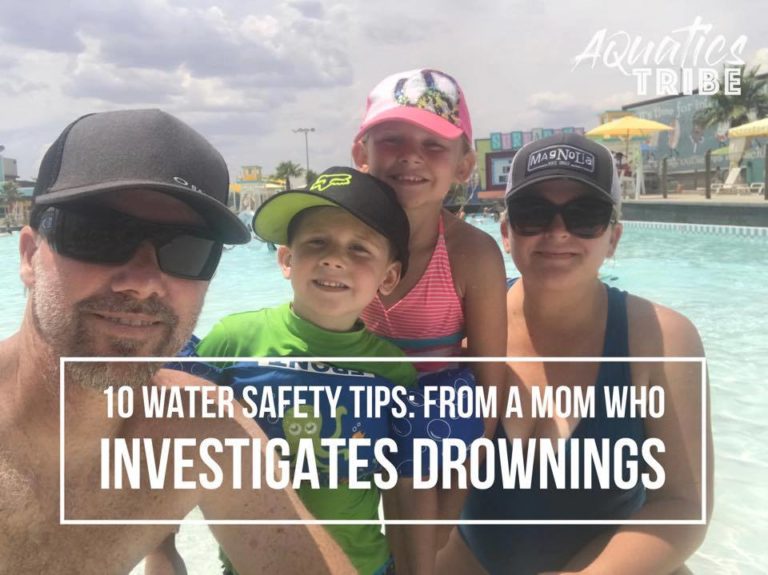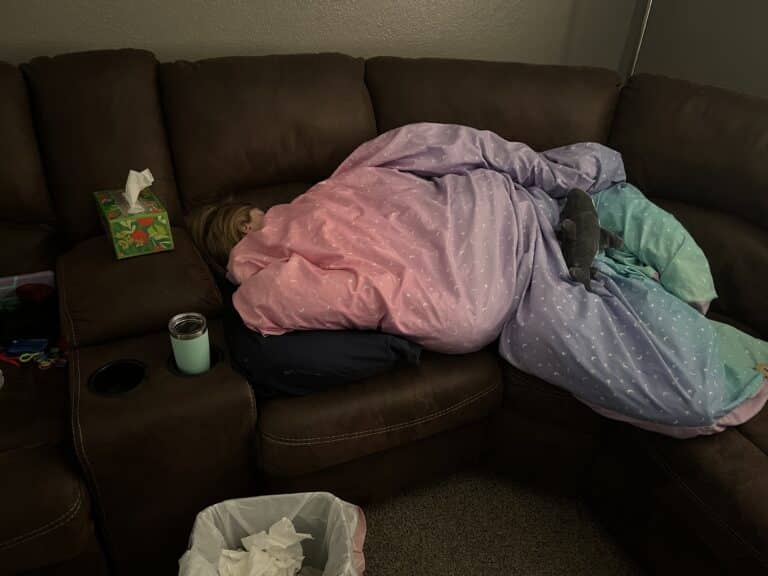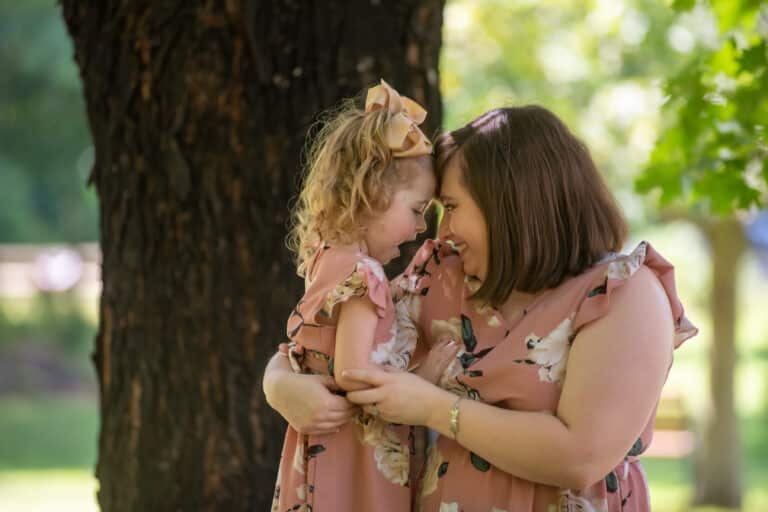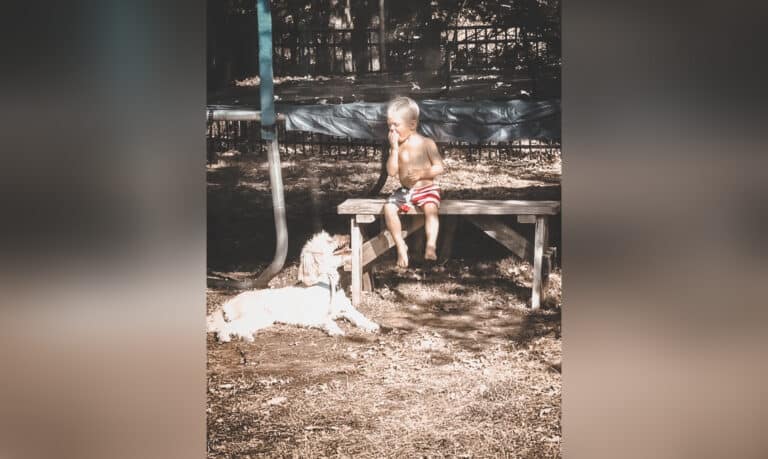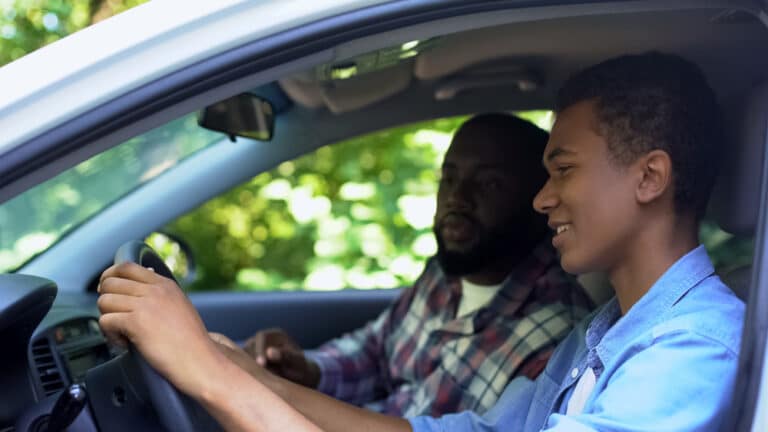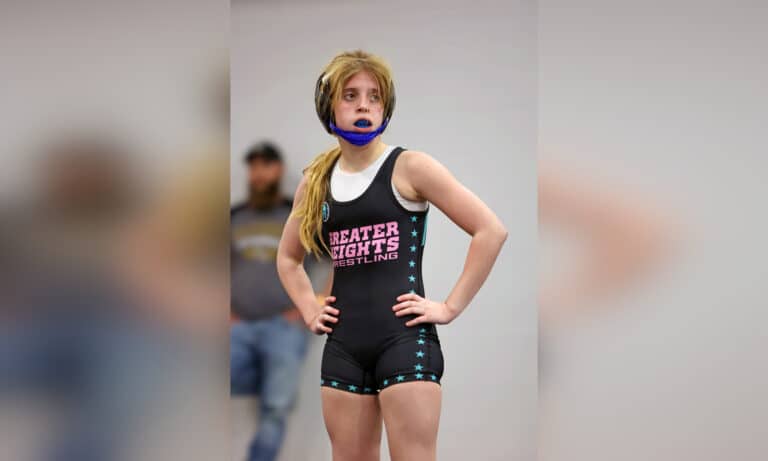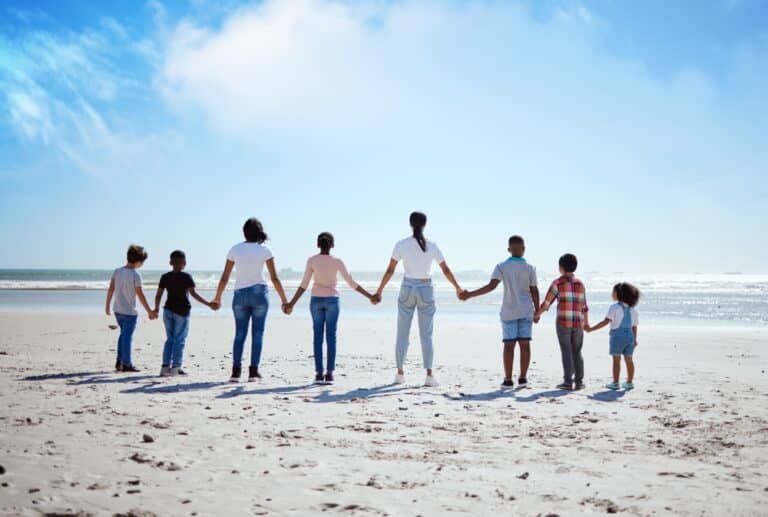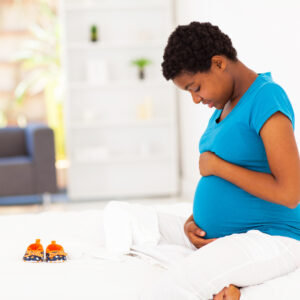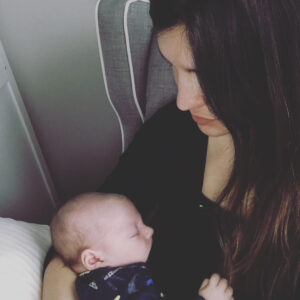I investigate drownings. I understand the realities of what can happen, often so quickly and quietly. I read a lot about water safety and tips telling parents paying attention to their children and not being distracted, which is so important. We see so many news articles about drowning during this time of year, but a lot of the advice isn’t practical and just highlights the problems, so I decided to write my own list of tips to help.
Here is a list of 10 random things I do to keep my own kids safe in the water.
1. Safety briefings
This actually started with a swim lesson procedure of making sure they always asked permission before entering the water. I have expanded it by having a little meeting about expectations. My kids now know to wait (sometimes impatiently continually asking me “Mom, what do we need to know . . . can we go yet?!?!?”) until I give my briefing. I outline where they can swim, jump in, how they can jump in, and anything else safety-related. A great time to do this is while applying sunscreen. They also know the consequences if they don’t follow the safety rules.
These meetings are a way for me to teach my kids respect for the water. They obviously know it is dangerous, knowing what I do for work, but sometimes aquatic centers, waterparks, beaches, and pools look so fun and enticing, that it is easy to forget. I think as parents we need to be just as concerned with the safety as we are with the fun, but that takes effort. I think some people may not want to ruin the fun by adding in rules, but I know rules create boundaries, which gives freedom in safety. I also love including my children in the safety briefings. What do they think the rules should be? What do they see as dangerous? They have some amazing insights too and sometimes see things I didn’t think of right away!
2. Depths of water vs. your height
My kids know depths of water and how to read them on the pool deck, and they know what it means related to their height. My 6-year-old knows that 4-ft of water is over his head, and 3 1/2-ft of water is up to his eyes, which is still over his airway. My 8-year-old daughter knows that 4-ft of water is at her eyes and she will need to tread and can’t have her airway out at this depth. This piece of knowledge helps them to make good decisions and helps them to understand how water depths are different for each person. Their taller friend may have no problem in the 4ft area, while they would need to tread or have trouble touching. Awareness of depth in relation to their bodies is important. This keeps me away from the, “But Mom, Jayden gets to go over there!” Yes, he does, he is also 6” taller than you are, buddy!
3. How to get away
I jumped in last weekend fully clothed with my phone in my hand at my 8-year-old daughter’s all-star softball hotel swim session after a tournament. It was instinct, a 5-year-old boy panicked and grabbed onto a 4-year-old girl and they were both struggling. He was holding her down and trying to keep himself above the water. In I went and scooped both of them out. They were both naturally scared, and a little burping of water/air, but they were fine. We see this all the time in drowning events, swimmers who are OK on their own, have someone grab onto them because they are struggling and they can’t get away.
I have taught, and I am still teaching my kids how to get away if someone grabs onto them. My daughter is a great swimmer, but I still don’t think she can tread water and keep her and another kid above the waterline.
I’ve taught them to suck, duck, tuck: Suck in air if you can (get a breath), duck under the water (the struggling person doesn’t want to go there), and tuck (use your arms and legs to push away) and then yell for an adult immediately to help the other person.
I’ve also taught them to be very careful of who they touch/grab onto in a pool. Even adults can be weaker swimmers and may have a hard time with them hanging on. Personal space is key.
4. Distraction reminders
I ask my kids to keep me accountable. They know either I or my husband should be watching them at all times. We have told them that if we aren’t watching them, they need to get our attention and help us because as humans we get distracted naturally. I try to stay involved in their activity and also tried to keep my phone away, but I was still distracted with other kids, food, talking, you name it . . . life is full of distractions.
I changed my tactic and downloaded a reminder app and I set reminders for every minute. I turn my phone into airplane mode and then use the app. Every minute it alerts me and I have the notification say “Kids Breathing” so I confirm my kids are OK and then clear the notification. Obviously, my goal is constant supervision, but sometimes my brain starts to wander to something I am thinking about and the notification checks me back in.
There are tons of campaigns about designating a “water watcher” with a specific tag indicating you have the responsibility of watching the water. I think these are great tools, and we also need to make sure the water watcher is not distracted. Alerts can keep you focused as long as you stay off your phone for all other purposes. I put my phone in airplane mode, but you can still have the tendency to look at. Be aware of your distractions both internal and external. If the phone is a distraction all together, maybe alerts aren’t for you. Find what works to keep you focused and stick with it for the entire swim time.
5. Designate breaks
We swim for a designated time, usually 30 minutes, but it varies depending on where we are and the activity taking place. Regardless, we always have breaks. I need these breaks more than my kids. They would swim endlessly for hours if I let them, but they need to rest and so do I. As a lifeguard, we would rotate every 20-30 minutes with the premise being to give our minds a break and so we could stay fresh. The same thing applies to parental supervision. I need to use the restroom, I need to do other things, I need a break, too! So, we give time warnings and take swim breaks. Sometimes the breaks are also unscheduled, if I have to make an emergency restroom visit or answer the door, everyone gets out, every time!
6. Limited trust
This may sound harsh, but I don’t trust other people to watch my kids in the pool. It is me or my husband, that is it. If they are swimming at Grandma’s they have to wear a life jacket. If they are going in the water at the beach on a board with their cousin, they have to wear a life jacket. I see so many events where trust was placed in another person, watch my kids while I go do XYZ, or Grandpa took them to the pool, or a neighbor invited them over.
I may love these people, and they may love my children, but I don’t trust them, nor do I want them to have to own that responsibility if something were to happen to one of my kids in their care. It just isn’t worth it.
Do my kids whine, yep. Do I care, nope! They know the other option is they just don’t go. Same goes for school pool parties and camps with water activities, it just isn’t worth it for me. Same goes for lifeguarded swimming areas. I know I am my kids’ primary source of supervision and the lifeguard(s) are there for back up and emergencies. I do not rely on them for basic supervision. I only have two children and I can supervise them much more closely than a lifeguard who has divided attention between 25 or more people.
7. Life jackets are cool
Culturally we seem to have a negative attitude toward life jackets. I don’t think there is anything wrong with life jackets, in fact, there are so many games and activities you can do with them. We just need to make them cool again. If there are a bunch of kids I’m watching, I’d rather have everyone be in a life jacket. It can be a cousin life jacket pool party. Having everyone in one makes it much “cooler” and doesn’t embarrass the littler kids or weaker swimmers. When I ran camps, even the counselors would wear them, be cool like them! Having rolling log challenges in the life jackets, water balloon tossing contests, have relays to pass rings from your toes . . . the games are endless, and the safety is higher with everyone in a life jacket. Now there are times that my kids will even say they would rather just be in a life jacket. Awesome.
**Just an added side note that when referring to “life jacket” I am referring to a USCG approved life jacket (check the inside of the jacket or vest). Noodles, inflatables, baby circles, tubes, and all other items are not safety rated and should not be used or trusted to keep your child safe. We see countless videos of kids who flip over in an inflatable ring and can’t right themselves and are stuck underwater upside down, or are in arm floaties and can’t get their head out of the water because their arms aren’t strong enough, or who lose purchase of a kickboard they were holding onto for floatation. Even in a lifejacket, you need to diligently and constantly supervise as children can get in positions that can still obstruct their airway especially if they are younger or weaker.
8. Educate
My kids know what drowning can look like. They know water is dangerous. They know good swimmers can drown. They know medical events can happen without warning. They know that drowning can happen quickly. I talk about how events happen, about what their weaknesses are. They know they can’t breathe in the water, they know why we take breaks from swimming, they know why they enter the water feet first, they know why we don’t play breath holding games or activities. It isn’t just because I said so, I try to give them real reasons to my rules. A healthy fear of the water is a good thing.
9. “Hey, watch this!”
Phrases like “Hey, watch this!” usually are the beginning of something dangerous or a little crazy about to take place. This is a kid’s way of announcing they are pushing the boundaries or are going to show off, and I take these phrases as a time to talk about danger and pushing boundaries. Are they just showing me something or are they about to do something risky? There is a difference and I try to talk about good decisions around the water. Phrases like “Hey, watch this!” are ways to cue into other people’s behaviors and intentions. They now alert me when others use these types of phrases too. I always say we can have fun without being dumb.
10. See something, say something
My kids are part of my safety team. They are buddy watchers for each other and I ask them to look out for other kids. I’ll often ask my son where his sister is, or what the other person is doing. I want to train them to look at others and make sure they are OK, to know what they are doing. My daughter the other day said, “Mom, I almost called you . . . that boy was under the water and I counted from 5 . . . 5, 4, 3, 2, 1 but he popped up again before I got to 2.” I asked her, what would you do if he was still underwater when you got to 1, and she said, “I’d say something to you or an adult until you responded”. Perfect. Kids are an additional layer of protection and they have good instincts. My kids know not to assume someone is playing. If they see someone underwater, they start counting.
So often, in drowning investigations we see kids (and adults) swimming over or around someone who is underwater and they don’t do anything. They assume they are OK, they assume they are playing, they assume they are doing it on purpose. Don’t assume. Teach them the 5-second rule (check out Mel Robbins’ book on the topic) and if they see something to say something.
Other water safety tips:
- Swim lessons save lives
- Learn CPR – Drowning patients need oxygen – give air first!
- USCG approved life jackets only – no arm floaties or inflatables
- Designate a water watcher/Swim with a lifeguard
- Always use pool barriers and layers of protection
- Enter the water feet-first
- No running
- Stay hydrated/protect yourself from the sun
- No drugs/alcohol
- All water is dangerous – even inches
- Always swim with a buddy
- Lost/missing kids – always check the water first
I hope this helps and gives you some practical tips for improving safety during your water-related activities. Share this information to hopefully prevent any more drownings.
Stay safe and vigilant!
This post originally published on Aquatics Tribe Facebook
You may also like:
Lifeguard Shares Warning For All Parents—Never Let Your Child Wear Water Wings

If you liked this, you'll love our book, SO GOD MADE A MOTHER available now!
Order NowCheck out our new Keepsake Companion Journal that pairs with our So God Made a Mother book!
Order Now

